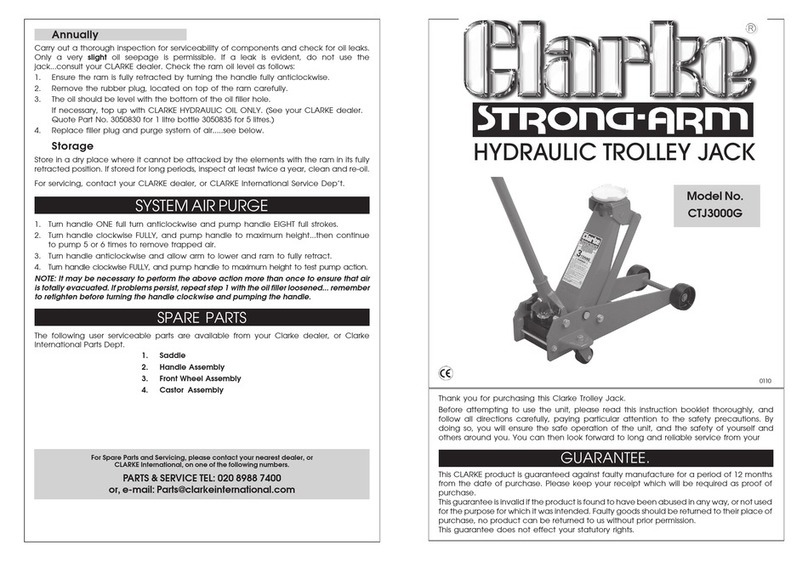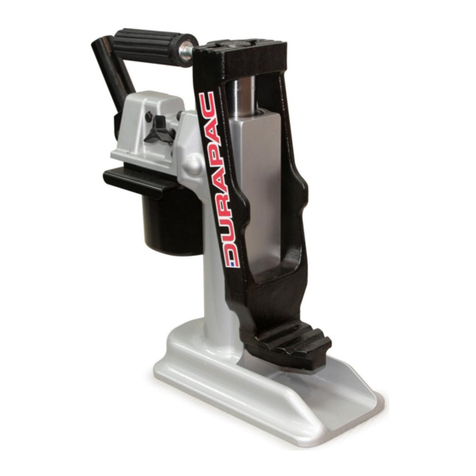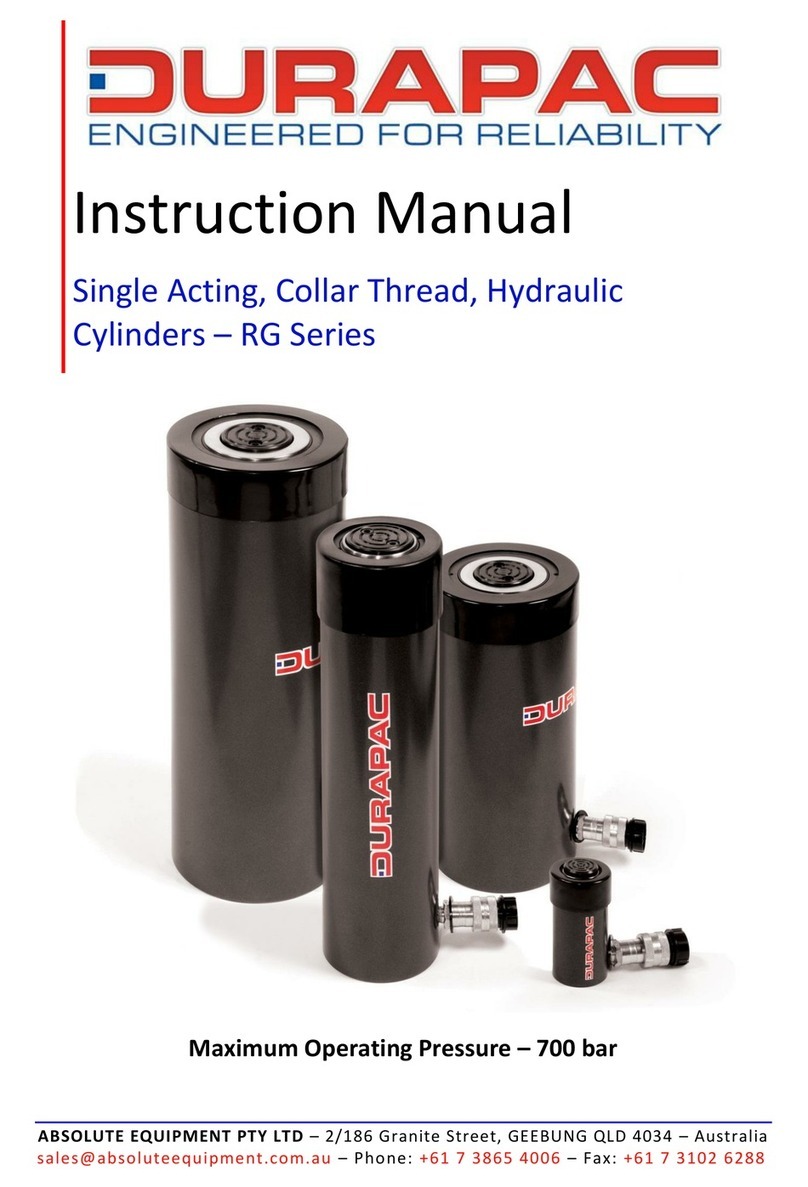
Instruction Manual
DBJ Series Bottle Jacks - V1.1 www.durapac.com Page 2 of 11
This is a safety alert symbol. It is used to alert you to potential personal injury hazards.
Obey all safety messages that follow this symbol to avoid injury or death
1.0 Product Information
DURAPAC –Hydraulic Bottle Jacks are engineered to meet Industrial Standards for Performance and
Safety. The DBJ Series of bottle jacks are a premium range ideally suited to most industrial lifting
and pushing applications. Models from 10-20 ton feature an additional screw extension and most
can be used in both the vertical and horizontal positions. All jacks are repairable and seal kits are
available.
All jacks have been designed for ease of use and handling
Operating handle is included with all models
Carbon steel base is automatically welded to ensure increased resistance to high pressure
and provide greater durability
Chrome plated steel piston rod resists corrosion and extends life
Internal stroke limiter prevents piston rod over-extension
Special skill, knowledge and training may be required for a specific task and the product may not be
suitable for all jobs. The user must ultimately make the decision regarding suitability of the product
for any given task and assume the responsibility of safety for all in the work area. Contact a Durapac
representative if you are unsure of your bottle jack’s suitability for a particular application.
2.0 Receiving Instructions
It is recommended prior to use that an inspection be done by qualified personnel and that any
missing or damaged parts, decals, warning/safety labels or signs are replaced with Durapac
authorised replacement parts only. Any bottle jack that appears to be damaged in any way, is worn,
leaking or operates abnormally should be removed from service immediately until such time as
repairs can be made. Any bottle jack that has been or suspected to have been subject to a shock
load should be removed from service immediately until inspected by a Durapac authorised service
centre. Owners and operators of this equipment should be aware that the use and subsequent
repair of this equipment may require specialised training and knowledge.
3.0 Safety
Save these instructions. For your safety, read and understand the information contained within. The
owner and operator should have an understanding of this product and safe operating procedures
before attempting to use this product. Instructions and safety information should be conveyed in the
operator's native language before use of this product is authorised. Make certain that the operator
thoroughly understands the inherent dangers associated with the use and misuse of the product. If
any doubt exists as to the safe and proper use of this product as outlined in this factory authorised
manual, remove from service immediately.
To avoid personal injury keep hands and feet away from work area during operation
Do NOT handle pressurised hoses. Escaping oil under pressure can penetrate the skin





























